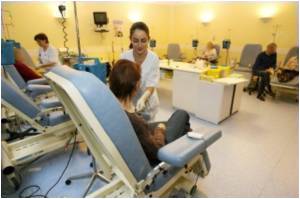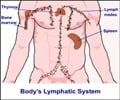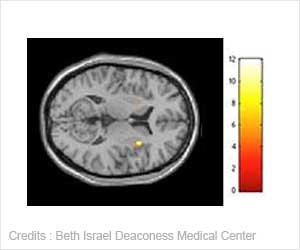Researchers have shown that a new imaging dye, designed and developed at UC San Diego Moores Cancer Center, is an effective agent in detecting and mapping cancers that have reached the lymph nodes.

"Tilmanocept is a novel engineered radiopharmaceutical specifically designed for sentinel lymph node detection," said David R. Vera, PhD, the drug's inventor, who is a professor in the UCSD Department of Radiology. "The molecule, developed at UC San Diego School of Medicine, offers surgeons a new tool to accurately detect and stage melanoma and breast cancers while in the operating room."
On March 13, 2013, tilmanocept received U.S. Food and Drug Administration (FDA) approval.
After a cancer diagnosis, surgeons want to be sure that the disease has not spread to a patient's lymph nodes, especially the sentinel nodes that may be the first place that a cancer reaches. The lymphatic system is a network of vessels and ducts that carry disease-fighting cells throughout the body, but can also act as a way for cancer cells to access the bloodstream. By surgically removing and examining the sentinel nodes that drain a tumor, doctors can better determine if a cancer has spread.
"Tilmanocept advances the molecular targeting in breast cancer. It's the first agent that is binding to a lymph node because it is a lymph node that plays an important role in metastasis," said Anne Wallace, MD, professor of surgery, UC San Diego School of Medicine and principal investigator of the study. "Tilmanocept's ability to identify more cancer containing nodes will lead to better post-operative care for patients, especially those patients who had more than one positive sentinel node."
Doctors compared injections of tilmanocept, also called Lymphoseek, and the standard blue dye into the tumor area. Then, using a handheld radiation detector, they found the lymph nodes that had taken up the drugs radioactivity. The researchers found that more than 99 percent of sentinel lymph nodes containing blue dye also contained tilmanocept. Of these nodes, 18 percent were positive for cancer. Ninety-four percent of the malignancies were detected by the new radiopharmaceutical whereas the blue dye only detected 76 percent.
Tilmanocept was originally developed at UC San Diego by Vera. Wallace advanced the agent through Phase 1 clinical trials with funding provided by the Susan G. Komen Breast Cancer Foundation and the American Cancer Society. The Phase III study was supported by Navidea Biopharmaceuticals, Inc. based in Dublin, Ohio.
Source-Eurekalert
 MEDINDIA
MEDINDIA




 Email
Email









